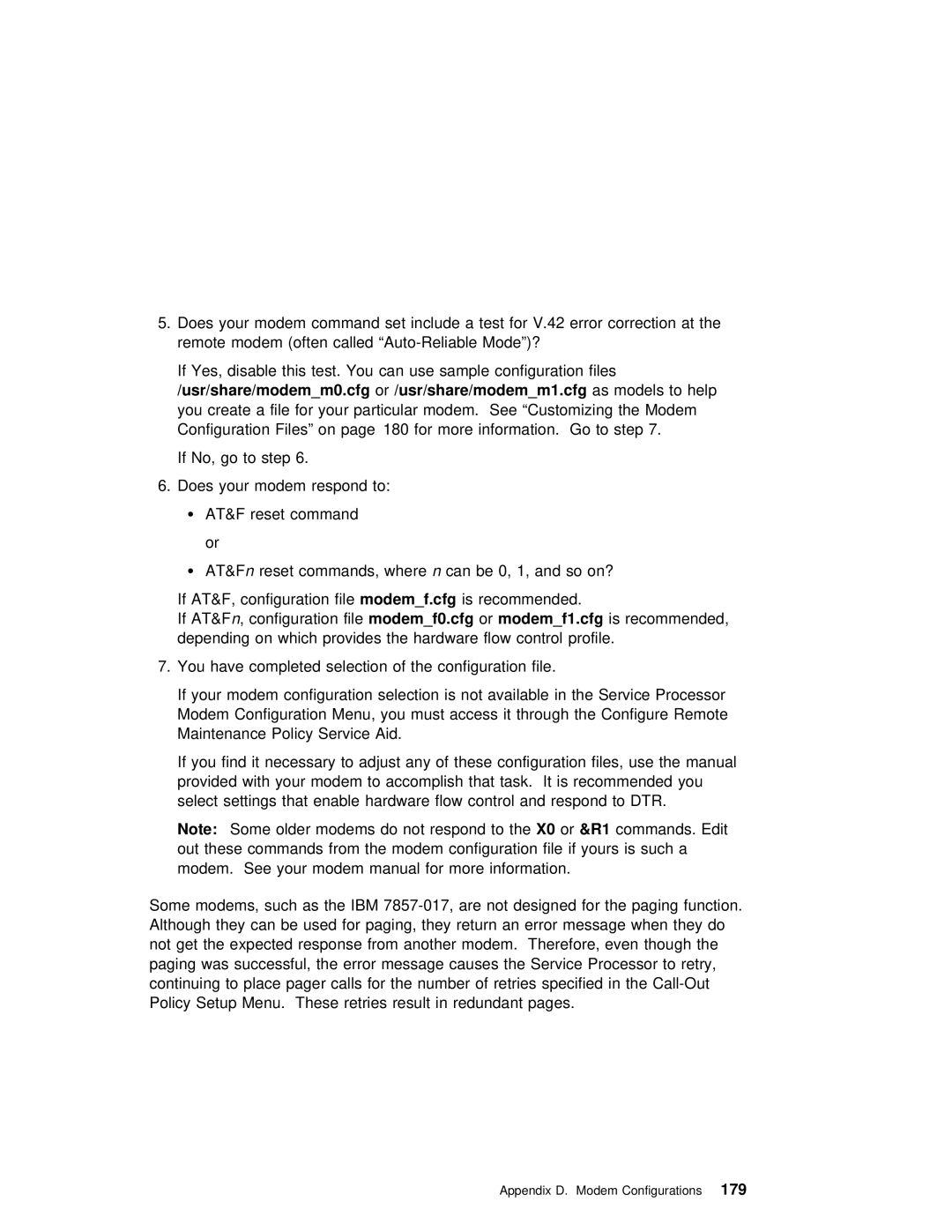5.Does your modem command set include a test for V.42 error correction at the remote modem (often called
If Yes, disable this test. You can use sample configuration files
/usr/share/modem_m0.cfg | or/usr/share/modem_m1.cfg | as models | to | help |
| |
you create a file for your particular modem. See | “Customizing | the Modem | ||||
Configuration Files” | on page 180 for more | information. | Go | to | step | 7. |
If No, go to step 6.
6. Does your modem respond to:
ŸAT&F reset command
| or |
|
|
|
|
|
Ÿ | AT&F n | reset commands, wheren can | be 0, 1, and so on? | |||
If | AT&F, | configurationmodem_ffile.cfg | is | recommended. |
| |
If AT&Fn , configurationmodemfilef0.cfg |
| ormodem_f1.cfg | is | recommended, | ||
depending | on which provides | the | hardware | flow | control profile. | |
7. You have completed selection of the configuration file.
If | your | modem | configuration | selection |
| is not available | in | the | Service |
| Processor | ||||||||||
Modem Configuration Menu, you must access it through the Configure Remote | |||||||||||||||||||||
Maintenance | Policy | Service Aid. |
|
|
|
|
|
|
|
|
|
|
| ||||||||
If you find it necessary | to adjust any of these configuration files, use | ||||||||||||||||||||
provided | with your | modem | to | accomplish that task. It is recommended you | |||||||||||||||||
select settings | that |
| enable | hardware | flow control and respond to DTR. |
| |||||||||||||||
Note: |
| Some | older | modems | do | not respond X0toor&R1the commands. | Edit |
|
|
|
| ||||||||||
out these commands from the | modem | configuration | file | if | yours | is | such | a | |||||||||||||
modem. See | your | modem | manual | for more | information. |
|
|
|
|
|
|
| |||||||||
Some | modems, | such | as | the | IBM | are | not designed | for | the | paging | function. | ||||||||||
Although |
| they | can be used for paging, they return an error message when they | ||||||||||||||||||
not | get | the | expected | response | from another modem. Therefore, even though the | ||||||||||||||||
paging was successful, the error message | causes | the | Service Processor | to retry, | |||||||||||||||||
continuing | to | place | pager | calls | for the number of retries | specified | in | the | |||||||||||||
Policy | Setup | Menu. | These | retries | result | in | redundant pages. |
|
|
|
|
| |||||||||
Appendix D. Modem Configurations179
